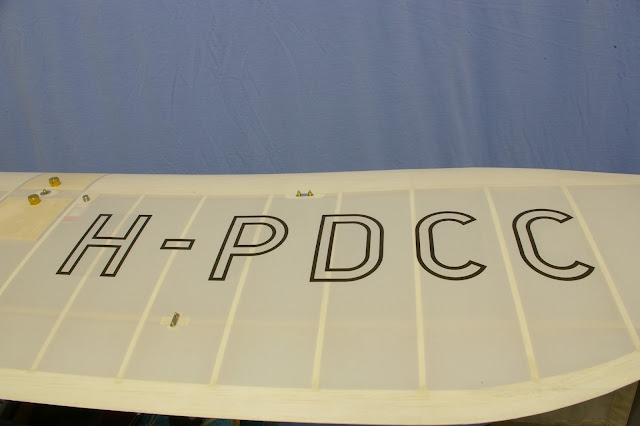 |
| In the open West-Frisian countryside |
 |
| In the garden |
 |
| Left side... |
 |
| ... and right side |
 |
| Engine running |
Building this model is not as straight-forward as one would like.
In the first place, there exist no exact drawings of the full-scale aircraft.
The Pou-du-Ciel design was intended for inexperienced home-builders. Building was described by mr. Mignet in a step-by-step, bottom-up fashion, in a book of which the 6th edition (1994) is depicted here. The book contains hundreds of sketches and photographs, but no to-scale drawings. To complicate things further, the original version, which flew well with small engines, rated at about 20 H.P., turned into a killing machine when over-powered, as a result of insufficient pitch control.
It was banned therefore, as a result of which many aircraft of this version survived time and can be seen in museums.
Mignet, however, didn't accept his defeat and came with a second version in 1936, with a controllable rear wing, inversely coupled to the front wing control. This version has the main focus in the later editions of his book, like this 6th, although the first version has been included for the sake of completeness.
There exist some sets of drawings of model Pous, e.g. from Nexus Plans Service (Aeromodeller) and from RCMagazine, but these refer to the first version. Moreover, their construction is quite different from the original construction, on one hand because they refer to English interpretations of the original Pou, and on the other hand because they are intended to fly, understandably.
So it was decided to draw own plans, of the 1936 version, applying the original construction as much as possible. This required a translation of building guidelines to exact dimensions. E.g., building the wing spars required bending the girders under a few bounding conditions. The effect of bending under these conditions was calculated using elasticity theory, resulting in the exact shape.



















































